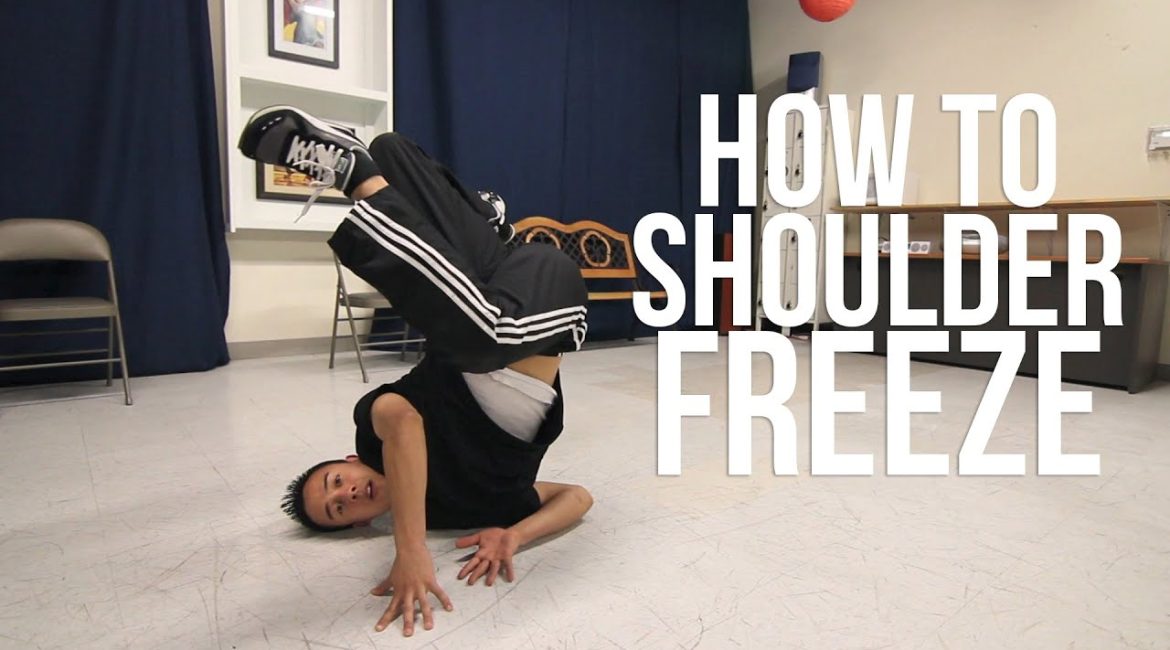The Shoulder Freeze is an essential freeze in breakdancing, revered not only for its aesthetic appeal but also for its foundational role in building up to more complex moves. Unlike many power moves that require considerable strength, the Shoulder Freeze relies more on balance and technique, making it an ideal starting point for beginners looking to advance their skills. This tutorial, inspired by lessons from B-boy Insanity, will guide you through mastering the Shoulder Freeze, emphasizing correct form and stability to ensure you get it strong and stable.
Understanding the Shoulder Freeze
The Shoulder Freeze involves balancing on one shoulder with the support of your head and arms while lifting your legs into the air. It’s a visually striking pose that demonstrates control and balance, forming a bridge to more advanced freezes and power moves in breakdancing.
Preparations for Learning the Shoulder Freeze
Before diving into the Shoulder Freeze, it’s crucial to warm up thoroughly to avoid injuries, especially around the shoulders and neck. Stretching your arms, shoulders, and neck can help prepare your body for the stress of balancing in the freeze position.
Equipment Needed:
- Mat or Soft Surface: Provides cushioning for your shoulder and head.
- Comfortable Clothing: Ensures ease of movement and reduces friction.
Step-by-Step Guide to the Shoulder Freeze
Step 1: Setting the Base
- Arm Placement: Choose the shoulder that feels stronger or more comfortable to freeze on. If you are right-handed, you might prefer using your right shoulder.
- Elbow Position: Keep the elbow of your freezing arm up to create a stable base. Your hand should be placed on the floor for support.
- Head and Shoulder Alignment: Tilt your head away from the shoulder you are freezing on to avoid putting direct pressure on the shoulder joint.
Step 2: Entering the Freeze
- Support Arm Positioning: Place your opposite arm on the floor for additional balance. Slide this arm underneath the freezing arm to create a supportive structure.
- Initial Leg Position: Begin by lifting one leg at a time. Start with lifting the leg opposite your freezing arm to find your balance.
Step 3: Lifting Into the Freeze
- Full Leg Lift: Once comfortable with one leg, try to lift the other leg. Your legs should be either straight up or in a controlled split to maintain balance.
- Final Adjustments: Make small adjustments with your supporting arm and the tilt of your head to find the optimal balancing point.
Training Tips for the Shoulder Freeze
Balancing Exercises
- Practice the Base: Spend time just balancing on your arm and shoulder without lifting your legs. This builds confidence and muscle memory.
- Gradual Leg Lifting: Start by tucking your knees and gradually try to extend your legs as you gain more stability.
Visual Focus
- Eye Positioning: Keep your eyes on a fixed point while practicing. This helps maintain balance and reduces the chance of falling.
Common Mistakes and How to Avoid Them
- Rushing the Freeze: Don’t rush to lift both legs before you are stable with one leg. Build your balance gradually.
- Incorrect Arm Position: Ensure your elbow isn’t too close to your body; it should be positioned to help distribute your weight evenly.
- Neglecting Core Strength: Engage your core throughout the freeze to help stabilize your body.
Advanced Techniques
Once you are comfortable with the basic Shoulder Freeze, you can start exploring variations:
- Straddle Legs: Instead of keeping your legs straight, try a straddle split to change the visual dynamic of the freeze.
- Rolling into the Freeze: Practice rolling back and using the momentum to lift into the freeze. This can add a dynamic entry into the freeze.
Conclusion
The Shoulder Freeze is more than just a trick; it’s a testament to a dancer’s balance and control. It requires patience, practice, and perseverance to master. By focusing on proper technique and gradually building your strength and balance, you can ensure a solid foundation not only for the Shoulder Freeze but for many other advanced breakdancing moves. Remember, the key to mastering breakdancing is not just about physical strength but understanding the mechanics and physics of your body in motion. Keep practicing, stay consistent, and soon you’ll be freezing with the best of them!


Leave a reply